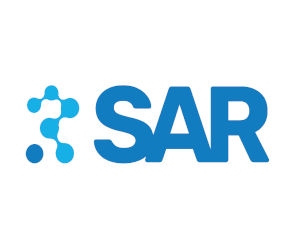Debut con actividad leve del lupus eritematoso sistémico y su evolución
Resumen
Objetivos: evaluar si los pacientes con lupus eritematoso sistémico (LES) al momento del diagnóstico con baja actividad de la enfermedad presentaron un curso más benigno de la enfermedad vs. aquellos que tuvieron actividad moderada/severa.Materiales y métodos: estudio observacional, analítico, de cohorte retrospectiva. Se revisaron historias clínicas de pacientes con diagnóstico de LES según criterios del American College of Rheumatology (ACR 1982/1997), del Systemic Lupus International Collaborating Clinics (SLICC 2012) o del ACR/European League Against Rheumatism (EULAR 2019), con un seguimiento mínimo de un año, que acudieron a la Sección de Reumatología del Hospital Rivadavia de la Ciudad Autónoma de Buenos Aires.Resultados: se incluyeron 100 pacientes con diagnóstico de LES, de los cuales el 44% presentaba actividad leve, mientras que el 56% tenía actividad moderada o severa al diagnóstico. Se observaron diferencias estadísticamente significativas entre ambos grupos en la cantidad de brotes a lo largo de la evolución de la enfermedad (mediana del grupo con actividad leve 0 [RIC 0-1] vs. mediana del grupo actividad moderada o severa 1 [RIC 1-2]; p<0,01). Se detectó un menor compromiso de órganos durante la evolución de la enfermedad en aquellos con actividad basal leve en comparación con actividad basal moderada/severa, con diferencias estadísticamente significativas en elcompromiso renal (15,91% vs. 55,36%; p<0,01).Conclusiones: los pacientes con actividad basal baja tuvieron un curso más benigno de la enfermedad y una menor cantidad de brotes severos, en comparación con quienes presentaron actividad moderada/severa al inicio de la enfermedad.Citas
I. Ocampo-Piraquive V, Nieto-Aristizábal I, Cañas CA, Tobón GJ. Mortality in systemic lupus erythematosus: causes, predictors and interventions. Expert Review of Clinical Immunology 2018;14(12):1043-1053. doi:10.1080/1744666X.2018.1538789.
II. Lateef A, Petri M. Unmet medical needs in systemic lupus erythematosus. Arthritis Res Ther 2012;14 Suppl 4:S4.
III. Pego-Reigosa JM, Rua-Figueroa I, López-Longo FJ, Galindo-Izquierdo M, Calvo-Alen J, Olive-Marques A, et al; RELESSER Group, from the Spanish Society of Rheumatology Systemic Autoimmune Diseases Study Group (EASSER). Analysis of disease activity and response to treatment in a large Spanish cohort of patients with systemic lupus erythematosus. Lupus 2015;24:720-9.
IV. Edwards CJ, Lian TY, Badsha H, the CL, Arden N, Chng HH. Hospitalization of individuals with systemic lupus erythematosus. Characteristics and predictors of outcome. Lupus 2003;12:672-676.
V. Bandeira M, Buratti S, Bartoli M, et al. Relationship between damage accrual, disease flares and cumulative drug therapies in juvenile-onset systemic lupus erythematosus. Lupus 2006;15:515-520.
VI. Ugarte-Gil MF, Acevedo-Vásquez E, Alarcón GS, et al. The number of flares patients experience impacts on damage accrual in systemic lupus erythematosus. Data from a multiethnic Latin American cohort. Ann Rheum Dis 2015;74:1019-1023.
VII. Stoll T, Sutcliffe N, Mach J, Klaghofer R, Isenberg DA. Analysis of the relationship between disease activity and damage in patients with systemic lupus erythematosus. A 5-yr prospective study. Rheumatology (Oxford) 2004;43:1039-1044.
VIII. Narayanan S, Wilson K, Ogelsby A, Juneau P, Durden E. Economic burden of systemic lupus erythematosus flares and comorbidities in a commercially insured population in the United States. J Occup Environ Med 2013;55:1262-1270.
IX. Zhu TY, Tam LS, Lee VW, Lee KK, Li EK. The impact of flare on disease costs of patients with systemic lupus erythematosus. Arthritis Rheum 2009;61:1159-1167.
X. Zhu TY, Tam LS, Lee VW, Lee KK, Li EK. Relationship between flare and health-related quality of life in patients with systemic lupus erythematosus. J Rheumatol 2010; 37:568-573.
XI. Pollard C, Hartz S, Leage SL, Paget MA, Cook J, Enstone A. Elicitation of health state utilities associated with varying severities of flares in systemic lupus erythematosus. Health Qual Life Outcomes 2015;13:66.
XII. Steiman AJ, Urowitz MB, Ibanez D, Papneja A, Gladman DD. Prolonged clinical remission in patients with systemic lupus erythematosus. J Rheumatol 2014;41:1808-16.
XIII. Costedoat-Chalumeau N, Dunogué B, Morel N, Le Guern V, Guettrot-Imbert G. Hydroxychloroquine: a multifaceted treatment in lupus. Presse Med 2014;43:167-80.
XIV. Wallace DJ, Gudsoorkar VS, Weisman MH, Venuturu-palli SR. New insights into mechanisms of therapeutic effects of antimalarial agents in SLE. Nat Rev Rheumatol 2012;8(9):522-33.
XV. Olsen NJ, Schleich MA, Karp DR. Multifaceted effects of hydroxychloroquine in human disease. Semin Arthritis Rheum 2013;43:264-72.
XVI. Chambers SA, Allen E, Rahman A, Isenberg D. Damage and mortality in a group of British patients with systemic lupus erythematosus followed up for over 10 years. Rheumatology (Oxford) 2009;48:673-5.
XVII. Nossent J, Kiss E, Rozman B, Pokorny G, Vlachoyiannopoulos P, Olesinska M, et al. Disease activity and damage accrual during the early disease course in a multinational inception cohort of patients with systemic lupus erythematosus. Lupus 2010;19:949-56.
XVIII. Urowits MB, Gladman DD, Ibáñez D, Fortin PR, Bae SC, Gordon C, et al. Evolution of disease burden over five years in a multicenter inception systemic lupus erythematosus cohort. Arthritis Care & Research 2012;64 (1):132-137. Doi: 10.1002/acr.20648.
XIX. Ugarte-Gil MF, Wojdyla D, Pons-Estel GJ, Quintana R, Gómez-Puerta JA, Catoggio LJ, et al. Predictors of remission and low disease activity state in systemic lupus erythematosus: data from a multiethnic, multinational latin american cohort. The Journal of Rheumatology 2019;46:10. doi:10.3899/jrheum.180433.
XX. Peschken CA, Wang Y, Abrahamowicz M, Pope J, Silverman E, Sayani A, Iczkovitz S, et al. Persistent disease activity remains a burden for patients with systemic lupus erythematosus. J Rheumatol 2019;46(2):166-175. doi: 10.3899/jrheum.171454.
XXI. Kalia S, Dutz JP. New concepts in antimalarial use and mode of action in dermatology. Dermatol Ther 2007;20:160-74.
XXII. Herman SM, Shin MH, Holbrook A, Rosenthal D. The role of antimalarials in the exacerbation of psoriasis: a systematic review. Am J Clin Dermatol 2006;7:249-57.
XXIII. Stelton CR, Connors DB, Walia SS, Walia HS. Hydro-chloroquine retinopathy: characteristic presentation with review of screening. Clin Rheumatol 2013;32:895-8.
XXIV. Ruiz-Irastorza G, Ramos-Casals M, Brito-Zeron P, Khamashta MA. Clinical efficacy and side effects of an-timalarials in systemic lupus erythematosus: a systematic review. Ann Rheum Dis 2010;69:20-8.
Derechos de autor 2022 A nombre de los autores. Derechos de reproducción: Sociedad Argentina de Reumatología

Esta obra está bajo licencia internacional Creative Commons Reconocimiento-NoComercial-SinObrasDerivadas 4.0.






